

The History of Winemaking: From Ancient Egypt to Today’s Emerging Trends & Technologies
Summary
Reflection Questions
Journal Prompt
Winemaking, an art and science that dates back thousands of years, has influenced the trajectory of many cultures throughout history. Origins of the wine making process can be traced to ancient civilizations of Egypt and Mesopotamia, evolving through time from a rudimentary alcoholic fermentation process to a sophisticated craft that intertwines tradition with technology. The significance of wine extends beyond mere consumption. It has been a symbol of social status, a sacramental element in religious rituals, and a marker of cultural identity across different eras and regions. In this article, we journey through the complex, global history of wine making, exploring its evolution from the time-honored methods of Ancient Greece to the innovative and sustainable practices of today’s biodynamic and technologically advanced wineries.
TLDR:
Wine making has undergone significant changes and innovations over the last fifty years, resulting in improvements in quality, sustainability, and diversity within the wine industry. Some key changes include the following. We will delve deeper into each of these changes throughout the article, so please read through if you have the time to do so!
Technological Advancements: Winemaking has embraced technology to a greater extent. Modern equipment, such as stainless steel tanks, automated fermentation controls, and precise temperature monitoring, has allowed for more consistent and controlled winemaking processes. This has improved the overall quality and consistency of wines.
Vineyard Practices: Advances in viticulture practices have led to better vineyard management. The use of technology, such as drones and GPS, has helped monitor vine health and optimize grape production. Sustainable and organic farming practices have gained popularity, reducing the use of chemicals and promoting biodiversity.
Climate Change Adaptation: Winemakers are increasingly adapting to the effects of climate change. They may alter grape varieties, change vineyard locations, or adjust harvest times to maintain wine quality in the face of shifting weather patterns.
Biodynamic and Organic Wines: There is a growing interest in biodynamic and organic winemaking, emphasizing natural and sustainable practices. These approaches often result in wines that are more reflective of their terroir and have gained popularity among environmentally conscious consumers.
Winemaking Regions: New winemaking regions have emerged around the world, challenging traditional wine-producing areas. Countries like China, New Zealand, and parts of the United States have become known for their wines, adding diversity to the global wine market.
Wine Styles and Varietals: Consumer preferences have shifted, leading to increased demand for specific wine styles and grape varieties. This has encouraged experimentation and diversification within the industry, resulting in a broader range of wines available to consumers.
Sustainability Practices: Sustainability has become a central focus in many wineries. Winemakers are adopting sustainable practices in vineyard management, water use, and energy consumption. Certification programs like organic, biodynamic, and sustainable viticulture are gaining traction.
Sustainability Practices: Sustainability has become a central focus in many wineries. Winemakers are adopting sustainable practices in vineyard management, water use, and energy consumption. Certification programs like organic, biodynamic, and sustainable viticulture are gaining traction.
Wine Packaging: There has been a move towards more sustainable packaging options, such as lighter glass bottles, bag-in-box packaging, and alternative closures like screw caps and synthetic corks. These changes aim to reduce the carbon footprint of wine production.
Consumer Education: With the advent of the internet and social media, consumers have access to a wealth of information about wine. This has led to a more educated and adventurous consumer base, eager to explore different wine regions, styles, and producers.
Globalization and Distribution: The globalization of the wine industry has expanded the availability of wines from around the world. Improved distribution networks and e-commerce have made it easier for consumers to access a wide variety of wines, including those from lesser-known regions.
The Ancient Origins of Winemaking
The production of red wine likely dates back to the earliest instances of winemaking, as ancient methods typically involved fermenting the juice of grapes with their skins. This process, known as maceration, is what imparts the red color to the wine. The production of white wine, separate from red, is less clear in historical records. However, it’s likely that white wines, made by fermenting grape juice without the skins, were also produced in early winemaking civilizations.
The production of sweet wine can be traced back to ancient civilizations. In regions like Greece and Rome, naturally sweet wines were likely made by harvesting overripe grapes, or by drying grapes to concentrate their sugars before fermentation. These methods led to wines with higher residual sugar. The noble rot method developed later, as did the production of rosé wines.
Early Evidence of Winemaking in Ancient Civilizations
The history of winemaking can be traced back to the Neolithic era, with the earliest evidence discovered in Georgia, around 6000 BC. Archaeologists found pottery jars containing residual wine compounds, suggesting that the practice of fermenting freshly crushed grapes was already established.
Further evidence in regions like Iran and Armenia, with discoveries dating back to 5000 BC and 4100 BC, respectively, indicates a broader geographical spread of early winemaking activities. These findings point to the Caucasus and Zagros Mountains regions as key early centers of winemaking.
The techniques and practices from these regions likely laid the foundation for the spread of winemaking to other ancient civilizations, showcasing how this craft was an integral part of early human agriculture and cultural development.
The Integral Role of Wine in Ancient Egypt and Mesopotamia
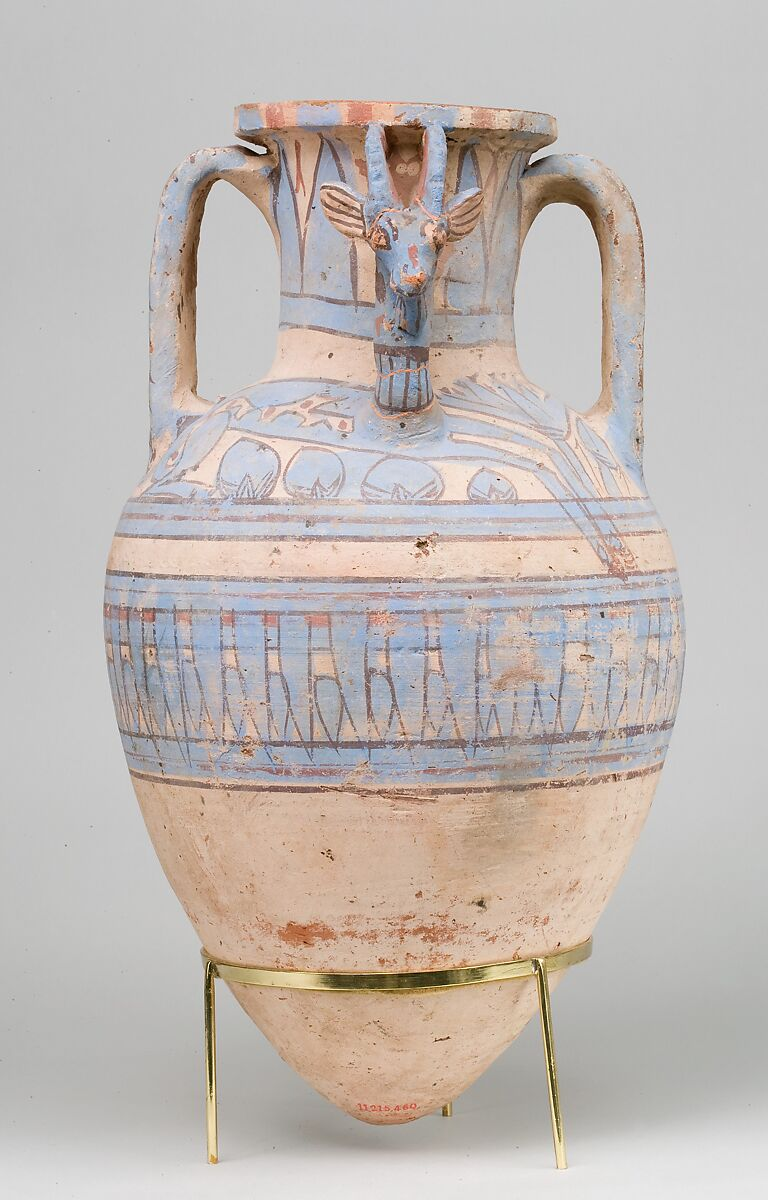

In Ancient Egypt, wine was more than a beverage; it was a symbol of affluence, often reserved for royalty, nobility, and religious ceremonies. Tomb paintings, dating back to around 3000 BC, illustrate the process of winemaking, indicating its cultural significance.
Wine was also used in religious offerings, believed to be a drink of the gods. In Mesopotamia, one of the world’s earliest urban civilizations, wine and wine grapes were prized possessions, reflecting wealth and status. Texts and artifacts from this era, including the famous Code of Hammurabi, reference wine, highlighting its role in society.
In both cultures, wine’s association with religious and social practices underscores its importance beyond mere sustenance, reflecting its deep integration into the spiritual and societal fabric.
The Advancement of Viticulture in Ancient Greece
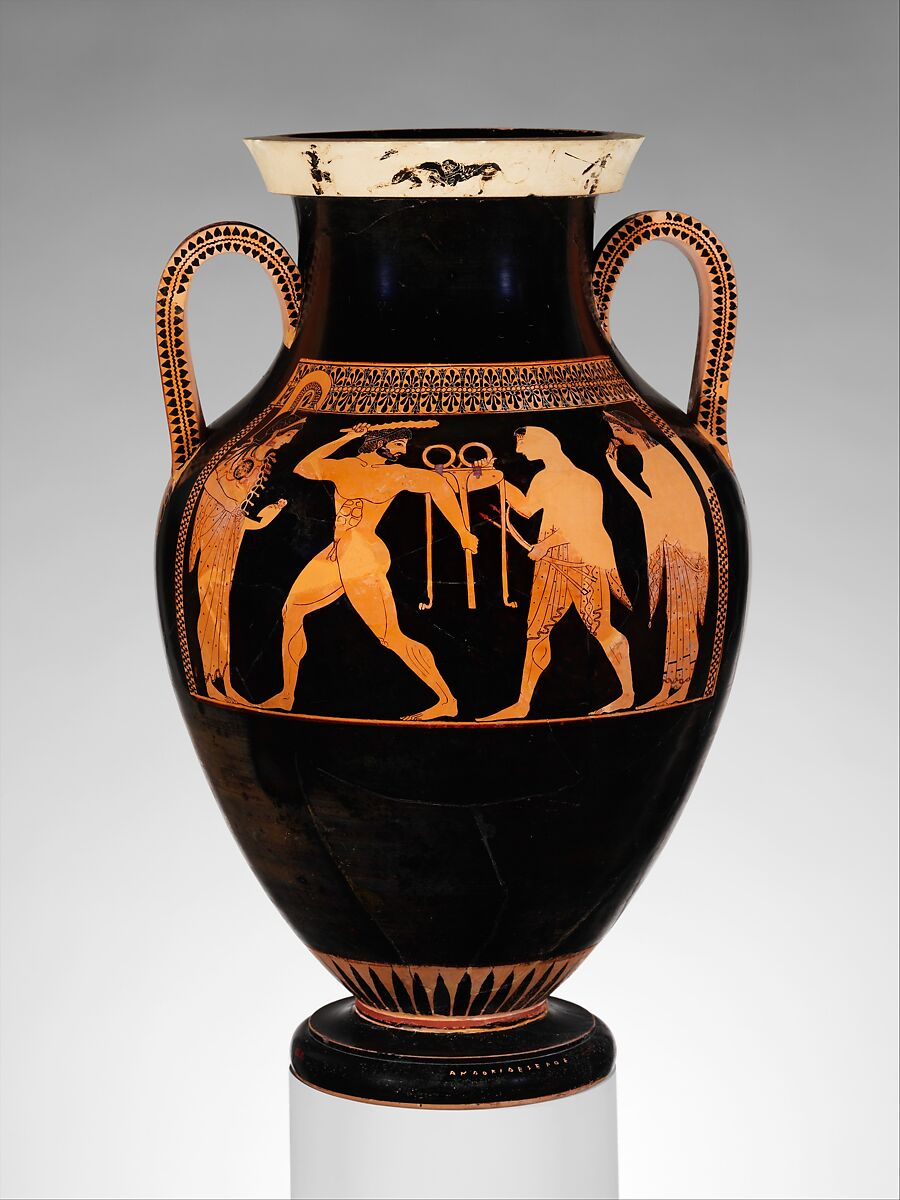

In Ancient Greece, winemaking evolved from a household practice to a well-organized agricultural activity. The Greeks were among the first to implement systematic cultivation of vineyards, recognizing the influence of climate, soil, and geography on wine quality. This period in ancient wine making saw the birth of oenology (the science of wine) and viticulture (the cultivation of grapevines) as disciplines.
Greek literature, particularly works by authors like Homer and Hesiod, illustrates the centrality of drinking and making wine in social and religious contexts. The symposium, a social gathering for drinking and intellectual conversation, was a testament to wine’s role in Greek culture.
The Greeks’ understanding of appellations, the concept that wine characteristics are influenced by their region of origin, was a revolutionary step in winemaking, laying the groundwork for future wine classifications and contributing significantly to the development of the wine industry in the Mediterranean, including the influence on Roman viticulture.
Winemaking in Ancient Rome


The Roman Empire played a pivotal role in the expansion of viticulture, spreading the practice across its vast territories. Romans not only embraced the winemaking techniques inherited from the Greeks but also extended vine cultivation to regions such as France, Spain, and Germany, areas that are now renowned for their wine production.
They were methodical in their approach, carefully selecting grape varieties suitable for different climates and terrains. This expansion was not only a testament to the Romans’ agricultural skills but also a reflection of the demand for wine throughout the Empire, which necessitated a large-scale and diverse production.
Innovations in Winemaking Techniques and Storage Methods
Roman contributions to winemaking were marked by significant innovations, particularly in techniques and storage. They improved upon Greek methods, introducing more efficient grape crushing techniques and fermentation processes.
Romans were also pioneers in developing storage solutions for grape wine, notably the use of wooden barrels and glass bottles sealed with cork, a significant advancement over the clay amphorae previously used. These innovations allowed for better preservation of wine, enhancing its quality and longevity, and facilitated transportation, thus expanding the trade and accessibility of wine.
The Cultural Significance of Wine in Roman Society


In Roman society, wine was more than just a beverage; it was a central part of daily life and social customs. It transcended class barriers, being consumed by both the elite and the common people, albeit of different qualities. Ancient wine was integral to religious rituals, often used in offerings to the gods, and featured prominently in festivals and public celebrations.
Moreover, it held a significant place in Roman literature, medicine, and gastronomy. The importance of wine in Roman culture can also be seen in the legal regulations that governed its production and distribution, underscoring its economic and social value in the Empire.
Evolution of the Wine Press
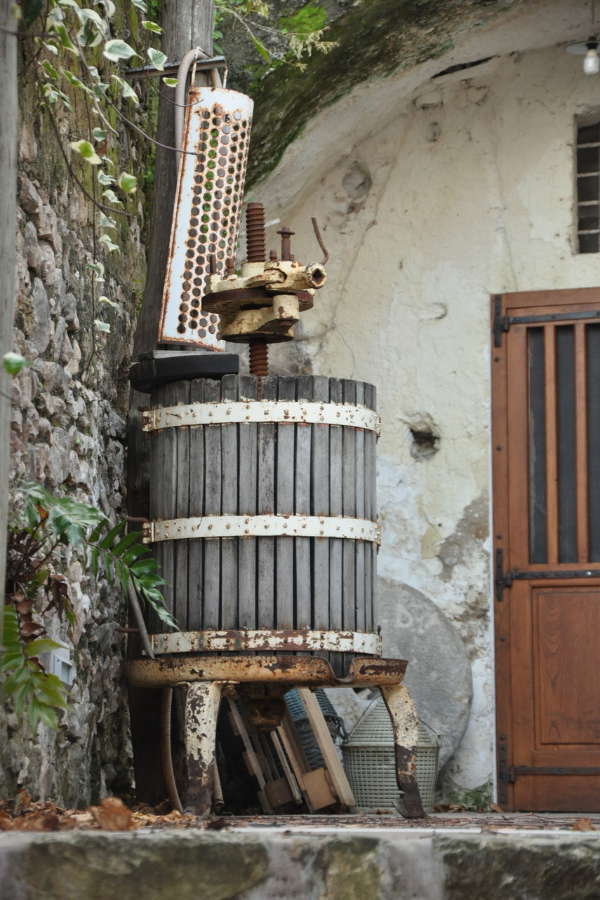

The wine press, an essential tool in winemaking, has a history that dates back thousands of years. The earliest evidence of wine press use comes from the ancient Near East by about 3000 BC. These early presses were very basic and manual in their operation.
The design and functionality of the wine press evolved significantly with the Greeks and especially the Romans. The Romans are credited with developing more sophisticated and efficient wine presses, which greatly improved the extraction process. These ancient Roman presses served as the basis for the design of wine presses for many centuries.
During the medieval period, particularly in Europe, further innovations were made to the wine press. The introduction of the screw press in the Middle Ages, for example, allowed for more efficient and controlled pressing and became a standard design element in many presses.
The wine press saw substantial mechanical improvements during the Industrial Revolution. The introduction of materials like iron allowed for the construction of more durable and powerful presses, further enhancing the efficiency and consistency of juice extraction.
In the modern era, with the advent of hydraulic and pneumatic presses, the efficiency and gentleness of pressing have been greatly improved, allowing for better quality wines. Today’s wine presses benefit from precision engineering and computer-controlled operations, making them far more advanced than their ancient predecessors.
Wine from Medieval through Modern Times: Evolving Past its Ancient Roots
Medieval and Renaissance Winemaking
During the Medieval period, Christian monasteries played a crucial role in the advancement of viticulture and winemaking in Europe. Monks in these monasteries meticulously cultivated vineyards and produced wine, not only for religious purposes but also as a means of sustaining their communities. They were among the first to implement systematic vineyard management techniques and to keep detailed records of their winemaking practices.
This period saw a significant improvement in the quality of wine, largely due to the monks’ dedication to understanding and refining the winemaking process. The legacy of their contributions is still evident in several renowned wine regions that were originally established by monasteries.
Developments in Wine Regions, Grape Varieties, and Classifications
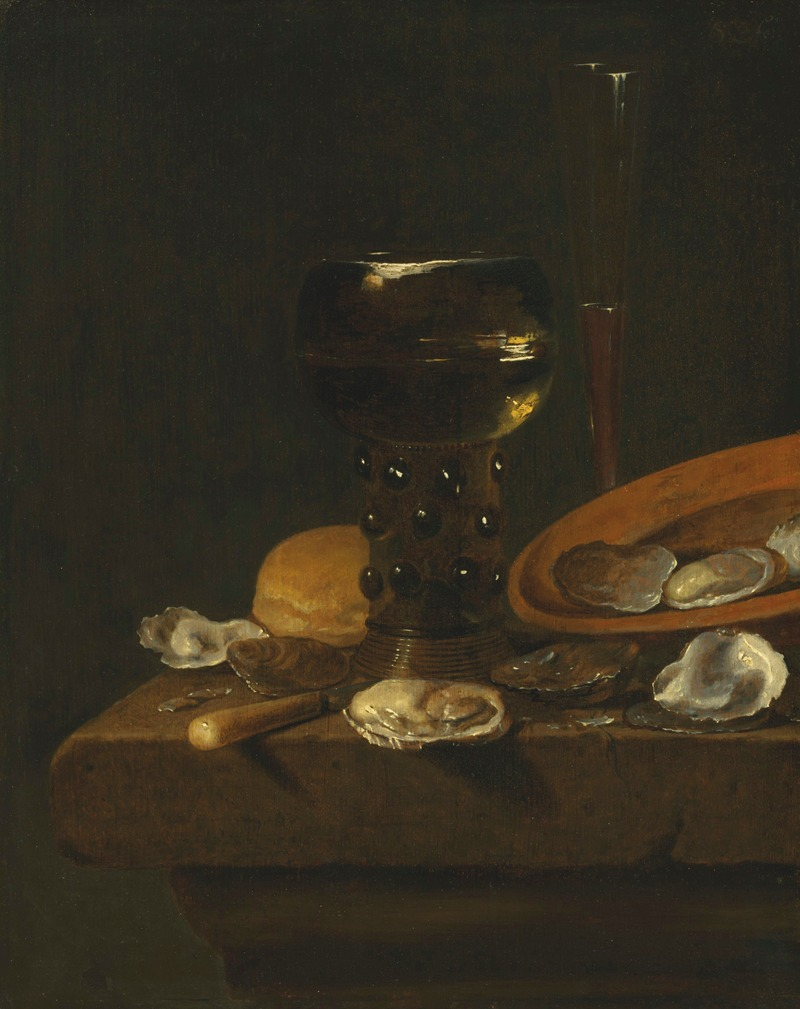

The Medieval and Renaissance periods were pivotal in the development of distinct wine regions, grape varieties, and wine classifications. As winemaking knowledge expanded, so did the understanding of how different climates, soils, and grape varieties affected the quality and characteristics of wine.
This understanding led to the identification of specific regions that were particularly suited to viticulture, and the classification of wines based on their geographical origin. The development and cultivation of various wine grape varieties were also refined during this time, contributing to the diverse range of wines we have today. This period laid the groundwork for appellation systems and the concept of terroir, which are central to modern winemaking.
The Impact of the Renaissance on Wine Culture and Distribution
The Renaissance period brought a renewed interest in arts and sciences, which had a significant impact on wine culture and distribution. With the revival of trade and commerce, wines began to be traded more extensively across Europe, leading to a broader dissemination of winemaking techniques and styles.
The Renaissance also saw an increase in the consumption of wine among the emerging middle class, expanding the market beyond the aristocracy and religious orders. This period marked the beginning of wine being appreciated as an art form, with connoisseurs starting to recognize and value different qualities in wines, setting the stage for the modern culture of wine appreciation and tasting.
The Industrial Revolution and Winemaking
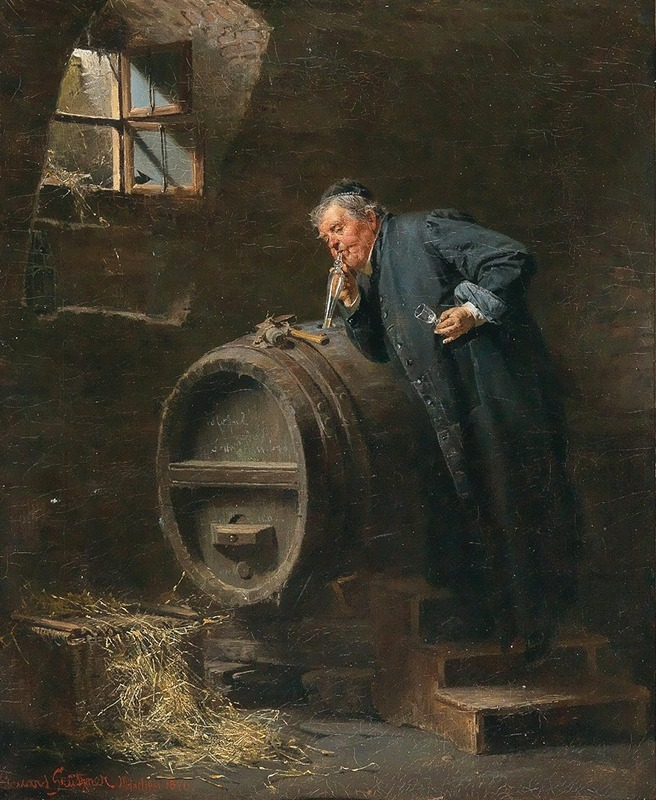

The Industrial Revolution brought significant changes to vineyard management through mechanization. The introduction of machinery, such as mechanized plows and harvesting equipment, revolutionized traditional practices. This shift allowed for more efficient cultivation of larger vineyard areas, significantly increasing wine production capabilities.
Mechanization also led to more consistent and controlled vineyard practices, contributing to a steady improvement in the quality of grapes and, consequently, the wine produced. However, it’s important to note that this era also marked the beginning of a more industrial approach to winemaking, with a focus on quantity and efficiency.
Advances in Bottling and Preservation
Advancements in bottling and preservation during the Industrial Revolution were crucial to the evolution of the wine industry. The development of more reliable bottling techniques, including the invention of the cork bottle stopper and improvements in glass production, greatly enhanced the shelf life and quality of wine.
These innovations made it possible to store and age wine more effectively, preserving its taste and preventing spoilage. Additionally, the advent of pasteurization in the 19th century, although more associated with dairy products, also influenced the wine industry by offering new methods to stabilize wine for longer periods.
Discovery of Yeast’s Role in Fermentation
The pivotal moment in the understanding of yeast in winemaking came in the 19th century with the work of French chemist Louis Pasteur. In the 1850s and 1860s, Pasteur conducted experiments that demonstrated the role of yeast in alcoholic fermentation and identified it as a living organism. This was a groundbreaking discovery that changed the course of winemaking.
Following Pasteur’s discoveries, the science of oenology (the study of wines) and microbiology advanced, leading to the isolation, cultivation, and intentional use of specific strains of wine yeast. By the late 19th and early 20th centuries, winemakers began to use cultured yeast strains for fermentation. This allowed for greater control over the fermentation process, consistency in wine production, and the ability to influence the flavor and quality of the wine.
The Emergence of Wine as a Commercial Product
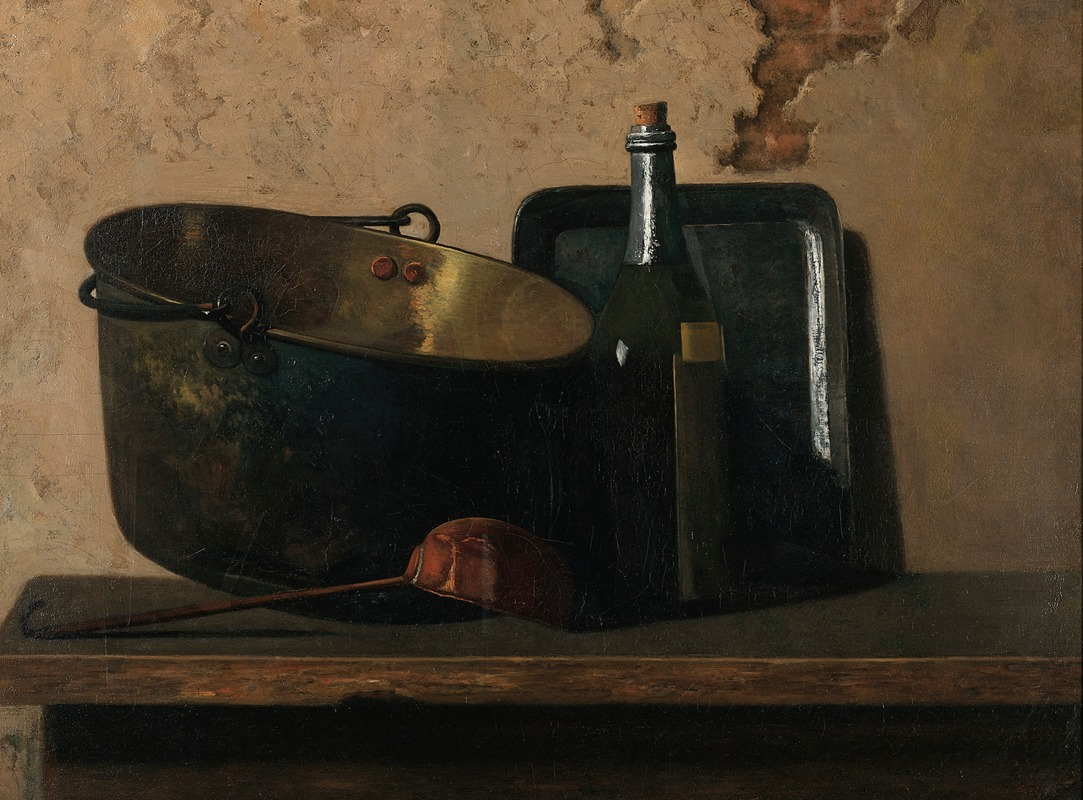

The Industrial Revolution also marked the transformation of wine from a locally consumed product to a widely traded commercial commodity. Improved transportation networks, such as railways and steamships, expanded the geographic reach of wine markets, allowing producers to sell their wines far beyond local boundaries.
The standardization of bottle sizes and labels made it easier to brand and market wines to a broader audience. Consequently, wine began to emerge as a significant sector within the global economy, with a market driven not only by local consumption but also by international trade, setting the stage for the modern global wine industry.
The Modern Era of Winemaking
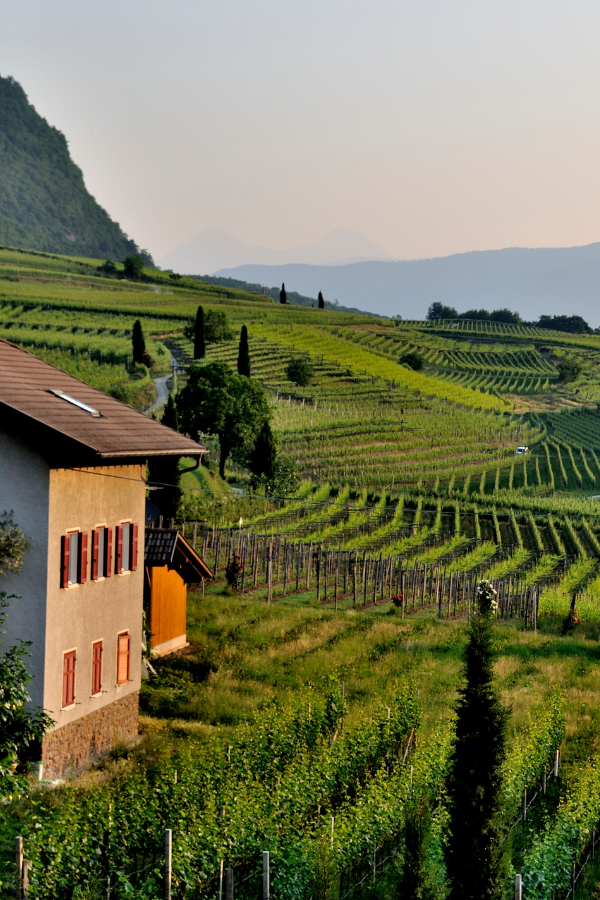

The modern era of winemaking is characterized by significant advancements in scientific approaches to viticulture (grape growing) and enology (wine production). This period, beginning in the late 19th century and continuing into the 20th and 21st centuries, saw the application of scientific principles to improve grape cultivation, when wine fermentation begins, and how the process evolves.
Breakthroughs in understanding diseases of grape clusters, soil chemistry, and climate’s impact on viticulture led to more effective vineyard management. In enology, the use of controlled fermentation, temperature management, and a deeper understanding of chemical processes in wine aging and flavor development revolutionized winemaking practices.
These scientific advancements have enabled winemakers to produce wines of consistent quality and to explore new and diverse styles of wine.
Global Expansion of Wine Production and the Rise of New World Wines
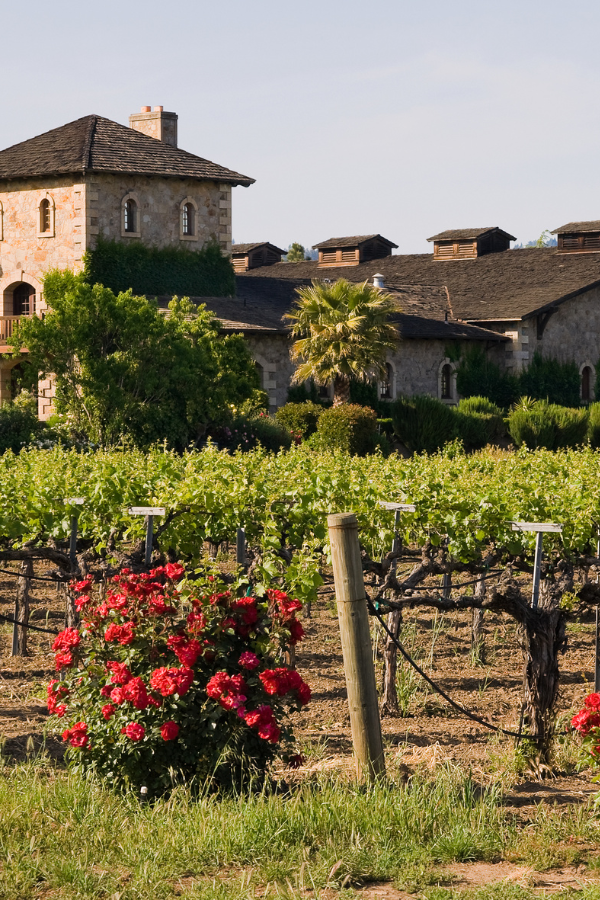

The modern era also witnessed the global expansion of wine production, with significant growth in what are known as the New World wine regions – countries like the United States, Australia, South Africa, Chile, and Argentina. These regions, which began gaining international recognition in the late 20th century, brought new styles, flavors, and innovations to the wine industry.
The rise of New World wines was facilitated by a combination of factors, including the adoption of modern viticulture and winemaking techniques, diverse climatic and geographical conditions, and a more experimental approach to winemaking. This expansion has added a rich diversity to the global wine market and created a dynamic environment of competition and exchange between Old World (European) and New World wine producers.
Impact of World Wars and Economic Changes on the Wine Industry
The wine industry was significantly affected by the world wars and subsequent economic changes. Both World War I and II led to considerable destruction of vineyards and wineries, especially in Europe, and disrupted the continuity of wine production and trade. Post-war economic recoveries, changes in land ownership, and shifts in market demand led to substantial restructuring and modernization of the wine industry.
The latter half of the 20th century saw a shift in consumer preferences, with an increasing demand for varietal labeling and quality over quantity. This period also marked the emergence of new markets and the globalization of red wine, white wine, and many other types, with changes in trade policies and the development of international wine trade networks, profoundly shaping the contemporary wine landscape.
Winemaking in the 21st Century


Wine and winemaking today differ significantly from the past due to technological advancements, scientific understanding, and a shift in consumer preferences. Modern winemaking benefits from precision agriculture, advanced fermentation techniques, and controlled aging processes, allowing winemakers to achieve consistency and quality at levels previously unattainable.
The integration of technology, such as data analytics and climate control systems, enables more precise management of vineyards and better control over the winemaking process. In terms of wine styles, there’s been a diversification beyond traditional profiles, influenced by global tastes and the rise of New World wine regions.
Today’s consumers are more informed and have a broader palette, driving demand for a variety of wines, including organic, biodynamic, and experimental styles. Additionally, sustainability and environmental considerations have become increasingly important, influencing practices from the vineyard to the bottle.
This modern era of winemaking, while still rooted in traditional principles, reflects a dynamic blend of history, innovation, and evolving global trends.
Biodynamic and Organic Wines
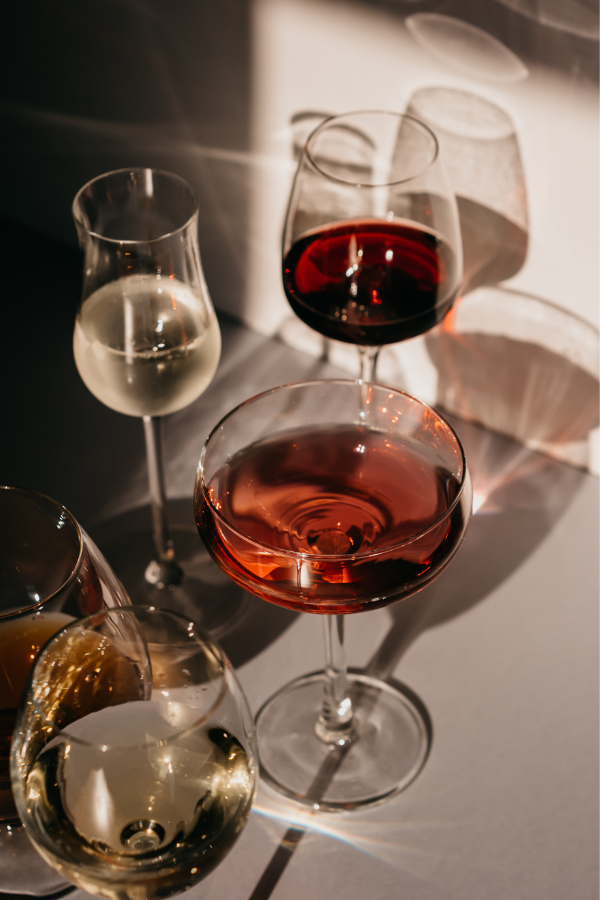

Biodynamic agriculture, applied to vineyards, is a holistic approach to farming that emphasizes a self-sustaining system where all elements of the farm are interrelated. Introduced by Rudolf Steiner in the early 20th century, biodynamic viticulture involves practices that are attuned to the ecological, energetic, and spiritual aspects of farming.
This includes following a planting calendar based on lunar cycles, using natural composts and preparations to enhance soil health, and treating the vineyard as a single organism. Biodynamic viticulture aims not just at grape cultivation but at the overall health of the entire ecosystem, seeking to achieve a balance that positively influences the quality and expression of the wine.
The Rise of Organic Winemaking Practices
Organic winemaking has gained significant momentum in recent decades, driven by an increasing awareness of environmental issues and health concerns. Organic viticulture focuses on the use of naturally occurring substances and biological processes for vineyard management, eschewing synthetic chemicals, fertilizers, and pesticides.
This approach promotes biodiversity, soil health, and ecological balance, and is regulated by various international and regional standards. The rise of organic winemaking reflects a broader shift in agricultural practices towards more sustainable and environmentally friendly methods, with a growing number of vineyards obtaining organic certification worldwide.
Consumer Trends towards Sustainable and Eco-Friendly Wines


The modern consumer’s growing concern for the environment and sustainable practices has significantly influenced the wine industry. There is an increasing demand for wines produced through sustainable, organic, and biodynamic methods, driven by the perception that these wines are not only better for the environment but also of higher quality.
This trend has encouraged more winemakers to adopt eco-friendly practices and to highlight these efforts in their marketing and labeling. The shift towards sustainable and eco-friendly wines is part of a larger trend in consumer behavior, reflecting a greater awareness and commitment to environmental responsibility and health-conscious consumption.
Integration of Technology in Vineyard Management and Wine Production
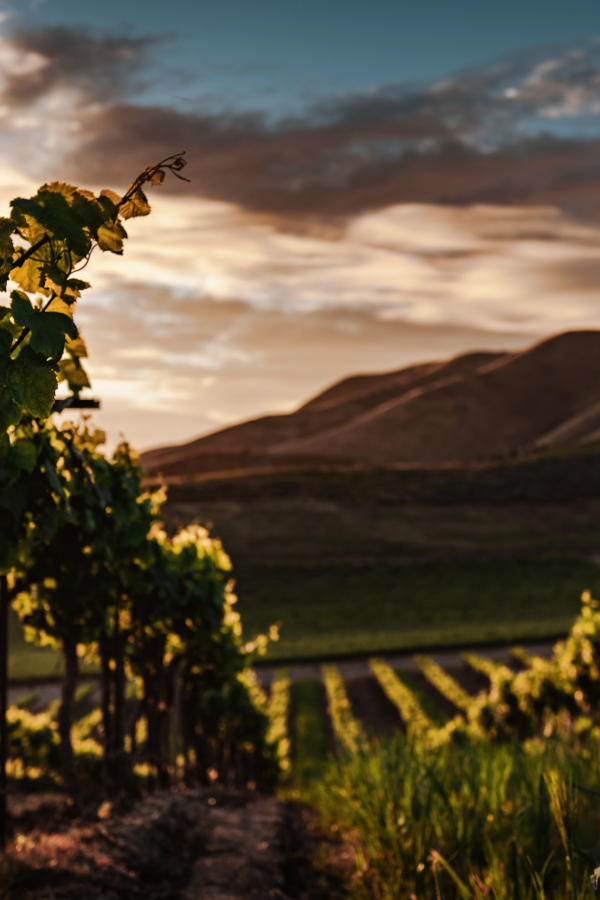

The integration of technology into vineyard management and wine production has revolutionized modern winemaking. Precision agriculture tools such as satellite imagery, GPS, and drone technology enable vintners to monitor vine health, soil conditions, and microclimates with unprecedented accuracy.
In the winery, advanced machinery for crushing, pressing, and bottling has increased efficiency and consistency. Temperature-controlled fermentation tanks and computerized monitoring systems allow for precise control over the winemaking process, leading to improved quality and experimentation with new wine styles.
These technological advancements have made winemaking more efficient, consistent, and adaptable to changing environmental conditions.
Role of Data Analytics and Artificial Intelligence in Enhancing Wine Quality
Data analytics and artificial intelligence (AI) are playing an increasingly important role in enhancing wine quality. By analyzing large sets of data from various sources, including climate patterns, soil conditions, and vineyard operations, winemakers can make informed decisions to optimize grape quality and yield.
AI algorithms can predict optimal harvest times, identify vineyard pests or diseases early, and suggest precise adjustments in the winemaking process. Machine learning models are also being used to develop predictive models for wine aging and taste profiles, offering innovative approaches to blending and aging wines.
These technologies are transforming the traditional art of winemaking into a more precise science, leading to higher quality wines.
Future Trends and Emerging Technologies in Winemaking


Looking to the future, emerging technologies are set to further transform winemaking. Developments in genomics may lead to more resilient grape varieties, able to withstand climate change and pests without compromising quality.
Nanotechnology holds the potential to refine filtration processes, enhancing flavor profiles and stability. Augmented reality and blockchain technology could revolutionize wine marketing and traceability, offering consumers an immersive experience and transparent information about the wine’s origin and production.
Additionally, sustainability-driven innovations, such as water conservation techniques and alternative packaging solutions, are expected to become increasingly prevalent. These advancements signal a future where technology and tradition coalesce to create sustainable, high-quality wines that meet the demands of an evolving global market.
Final Thoughts on the Evolution of Winemaking
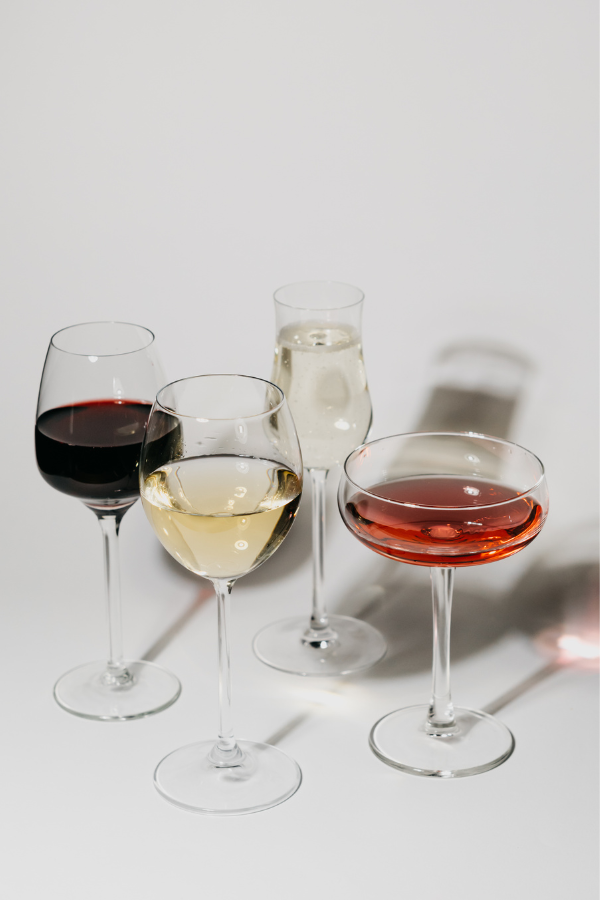

The journey of winemaking from its ancient origins to the technologically advanced practices of today illustrates a remarkable evolution that was shaped by centuries of cultural, scientific, and technological advancements. Historical practices have laid the foundation for modern winemaking, with each era contributing its own innovations and understandings.
As we look to the future, it is clear that the wine industry will continue to evolve, influenced by emerging technologies, environmental challenges, and changing consumer preferences. Developments in areas like precision agriculture, data analytics, and sustainable practices are poised to further revolutionize winemaking, potentially leading to even greater quality and diversity in wine production. The future of winemaking, while deeply rooted in its rich history, is on the cusp of new frontiers that promise to reshape the industry in profound and exciting ways.








